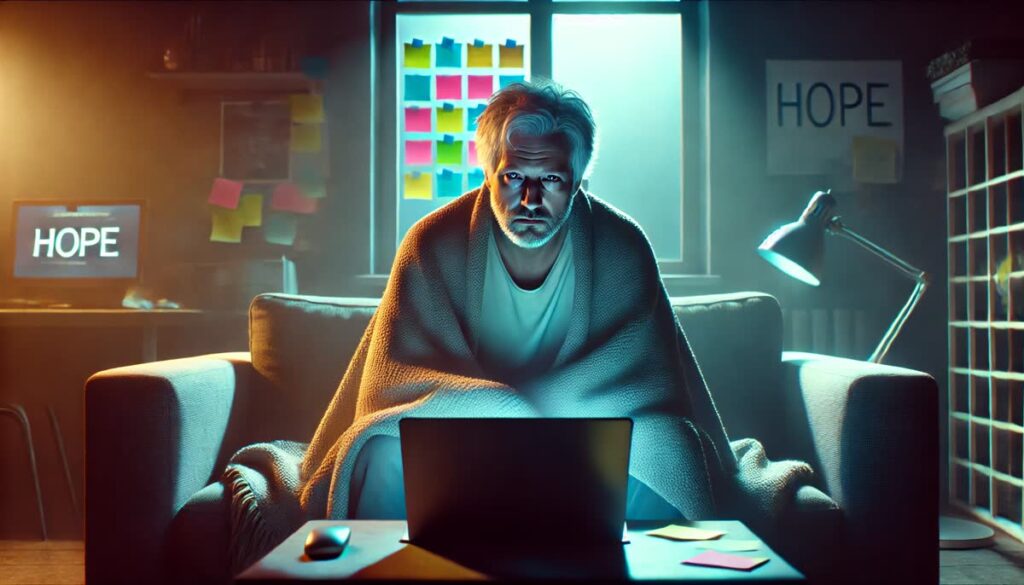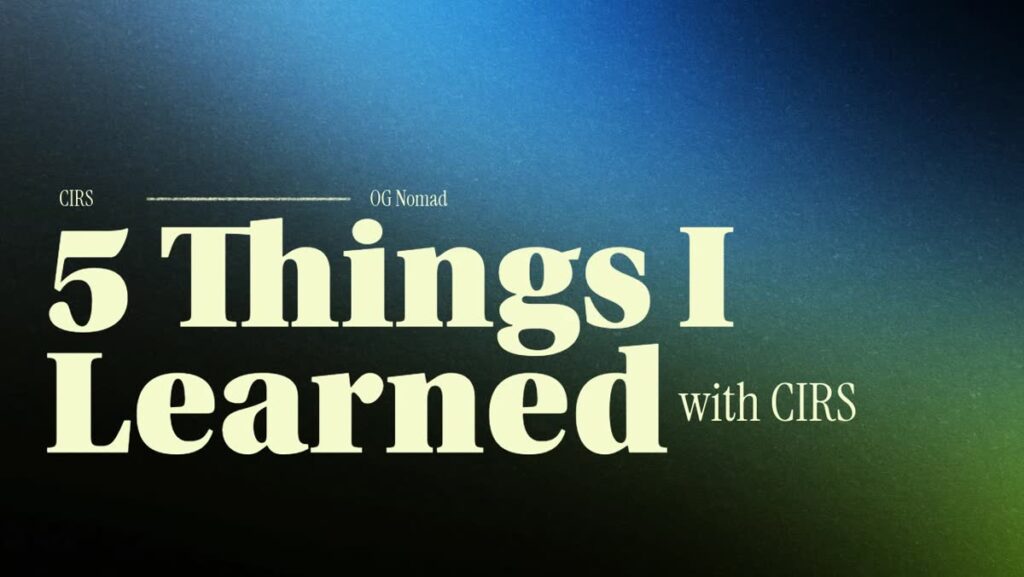This blog post was built entirely from a YouTube video. No scripts, no transcription software, and no AI generated robotic summary.
Just raw video, reshaped into a clean, structured article that reads like it was written from scratch.
Here’s the original clip I worked from:
I use a hybrid workflow: AI tools + narrative structure + human editing. That’s how I turn videos into blog posts that keep your tone, tell a story, and are ready to rank.
If you would like me to turn your videos into ranking blog posts DM HERE
Mold Illness Broke Me – 5 Things I Learned From CIRS and Mold Illness
Table of Contents
Three years ago, I was living in Bangkok. This is how I became sick with CIRS (Chronic Inflammatory Response Syndrome) and the mold illness lessons I learned along the way.
I was living in an old condo building. The sort of place you rent when you think you’re being “cheap but clever.” The condo had a rooftop swimming pool that had probably been leaking into the walls and foundations for years.
I didn’t know about mold back then. I just thought I was saving money on rent. Those small savings have cost me my business, relationships, and most importantly my health.
Five months after moving into that cheap condo, my health collapsed both mentally and physically. Then my entire life started to unravel.
After several months, I realized it was mold. I pulled a closet off the wall and was greeted by a black hole of mold. I don’t want to imagine what was happening above me behind those old ceiling tiles. But, from what I could understand, the entire building was infested with mold.
That was my introduction to CIRS — Chronic Inflammatory Response Syndrome. Since then, I’ve learned a lot, more than I ever wanted to know. And while no two journeys are the same, here are five lessons mold illness has taught me.
1. Trying to Explain Mold Illness Feels Like You’re Going Crazy
“How can something so small be so big?”
That’s the thought that haunts me. Mold spores, invisible toxins. How could that wreck my brain, body, and life? How could only a few months in a severely water-damaged building take me from healthy and functional to completely broken?
At the height of my illness, I developed neurological symptoms that made me feel like a stranger to myself. I experienced:
- Tourette’s-like outbursts.
- Obsessive-compulsive behaviors.
- Schizophrenia, psychosis,
- Mild dementia.
Try explaining those symptoms to someone who has never heard of CIRS. Try explaining why you run from buildings, freak out on the street, and hide behind a mask — when only a few months earlier you were normal.
This is the reality for many people with mold illness. Studies show up to 25% of the population has a genetic susceptibility to CIRS. When exposed to water-damaged buildings, their immune systems misfire. It’s not just inflammation — mycotoxins can cause oxidative stress, mitochondrial damage, and gut barrier dysfunction.
You’re not crazy. But explaining this condition will often make you feel like you’ve lost your mind.
2. There Is No Perfect Place When You Have Mold Illness
During the last three years, I’ve moved more times than I can count. New buildings, old buildings, deserts, humid coastlines, semi-arid climates. I have drained my bank balance trying them all.
At one point, I was moving every month, running from an invisible enemy that turned out to be the air I was breathing.
I kept chasing “the perfect location.” And I learned a very valuable lesson: the perfect location doesn’t exist.
In the US, 50% of buildings are water-damaged. In some countries, it’s even more.
After a while, I started to realize this isn’t about finding perfect. It’s about managing exposure, making trade-offs, and finding a place where I could heal.
I thought that place was the desert. The problem was, I chose a cheap desert (Egypt) and found bad plumbing instead of relief.
I also thought that perfect was new. After all, there is no mold in a new build, right? What I found there was off-gassing. And the realization that you never truly control your environment in an apartment block.
If someone has found a perfect mold-free haven, please — comment below. I’d love to hear about it. And yes, I will tell you about my personal experiences in future posts, so please subscribe.

3. Recovery Is Expensive
This is the mold illness lesson that hits the hardest.
When I got back to the UK and turned to the “free” health service, they prescribed antidepressants and told me I was anxious. Well, of course I was anxious — my life had collapsed.
The thing was, I was also sick and allergic to everything around me. I was reacting to humidity, rain, wood, and people.
The Shoemaker Protocol is the gold standard for CIRS recovery. And yes, it has clinical evidence behind it. But here’s the kicker: it’s expensive.
- Doctors trained in the protocol are Expensive, and mostly in the US.
- High-grade, grass-fed beef and low-inflammation diets are expensive.
- Medication, binders, labs, air purifiers, and mold-safe housing are very expensive,
And the cruel irony? When CIRS hits you hardest, you can’t work. Your income dries up and your expenses multiply exponentially.
If anyone has solved this puzzle, I’d genuinely like to know. Because right now, affordability is my biggest barrier to recovery.
4. Support Groups Can Make It Worse
Here’s a controversial one: CIRS support groups often increase anxiety, not relief. When you are suffering with mold illness. You will already be in a state of high anxiety.
I’ve tried them all — Reddit threads, Facebook groups, paid forums. Some are full of desperate people crying for help. Others are hijacked by Instagram influencers selling detox plans and fishing for likes.
The result? Noise, panic, comparison. And if you’re already drowning in confusion, enough contradictory “I did this” comments to drive you over the edge.
That doesn’t mean community is worthless. It just means you need to choose your community carefully. One empathetic friend who listens is worth more than a thousand strangers shouting into the void.
If that friend does not exist, beware isolation — a subject I unfortunately know far too much about.
5. Mold Illness Changes You
Three years ago, I was running around Bangkok with a camera, laughing, joking, and living my best life.
Now I sit alone, angry, anxious, and desperate to survive. Financially, physically, and emotionally I am ruined. The thing that hurts the most is looking in the mirror and no longer seeing me.
Every relationship has been tested. Some people gave up on me. Others just couldn’t understand what I was going through. When I don’t fully understand myself, I can’t blame them.
But one thing is clear: CIRS changes who you are. Your priorities shift. Your resilience gets tested on a daily basis. You’re forced to rethink everything and second-guess your every decision.
If you’ve been through this and somehow stayed the same person, I envy you. But for most of us, mold illness leaves a mark. I am fighting to get back to my old self. Every word you read is part of that fight.
Understanding the Bigger Picture
CIRS is still widely misunderstood. It’s often misdiagnosed as chronic fatigue syndrome, fibromyalgia, or just “stress.” But according to functional medicine experts like Dr. Kelly McCann, “The biggest CIRS trigger for most people is mold and mycotoxin exposure from water-damaged buildings.”
There are, of course, the knock-on effects. I am now allergic to most people due to the quirk of off-gassing. I will write about that in another blog.
Dr. Ritchie Shoemaker’s protocol remains the only CIRS treatment with documented clinical efficacy. That doesn’t mean it’s perfect. But it does mean there’s a path forward — even if it’s hard work, expensive to obtain, and frustratingly inaccessible.
So, What’s the Solution?
Here’s the truth: there is no quick fix or magic detox. There is no Instagram reel that will heal you — despite those claiming there is.
The solution is piecing together whatever helps. Safer housing, clean air, and protocols that work for you. The first and most challenging task is safe housing. I will look at those options in another post.
The golden egg is a doctor who understands CIRS. If you find one and you’re lucky enough to have friends and family who understand, you have an open road to healing.
Mold Illness Lessons Final Thoughts
These are the five biggest lessons I’ve learned from mold illness and CIRS.
- It makes you feel crazy.
- There’s no perfect place to escape.
- Recovery is brutally expensive.
- Support groups can do more harm than good.
- It will change you, whether you want it to or not.
If any of this resonates with you, or if you’ve found a piece of the puzzle that helped, please share it in the comments. I will reply to every message. Because at the end of the day, what most of us need is not just treatment — it’s connection and understanding.
Do you have any mold illness lessons you have learnt the hard way. Is, please share them in the comments section below.

